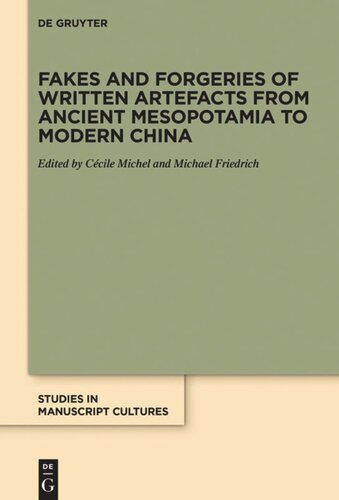

Most ebook files are in PDF format, so you can easily read them using various software such as Foxit Reader or directly on the Google Chrome browser.
Some ebook files are released by publishers in other formats such as .awz, .mobi, .epub, .fb2, etc. You may need to install specific software to read these formats on mobile/PC, such as Calibre.
Please read the tutorial at this link: https://ebookbell.com/faq
We offer FREE conversion to the popular formats you request; however, this may take some time. Therefore, right after payment, please email us, and we will try to provide the service as quickly as possible.
For some exceptional file formats or broken links (if any), please refrain from opening any disputes. Instead, email us first, and we will try to assist within a maximum of 6 hours.
EbookBell Team

5.0
80 reviewsOpen Access
Fakes and forgeries are objects of fascination. This volume contains a series of thirteen articles devoted to fakes and forgeries of written artefacts from the beginnings of writing in Mesopotamia to modern China. The studies emphasise the subtle distinctions conveyed by an established vocabulary relating to the reproduction of ancient artefacts and production of artefacts claiming to be ancient: from copies, replicas and imitations to fakes and forgeries. Fakes are often a response to a demand from the public or scholarly milieu, or even both. The motives behind their production may be economic, political, religious or personal – aspiring to fame or simply playing a joke. Fakes may be revealed by combining the study of their contents, codicological, epigraphic and palaeographic analyses, and scientific investigations. However, certain famous unsolved cases still continue to defy technology today, no matter how advanced it is. Nowadays, one can find fakes in museums and private collections alike; they abound on the antique market, mixed with real artefacts that have often been looted. The scientific community’s attitude to such objects calls for ethical reflection.